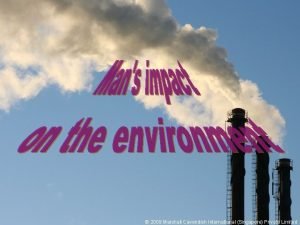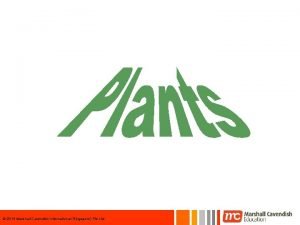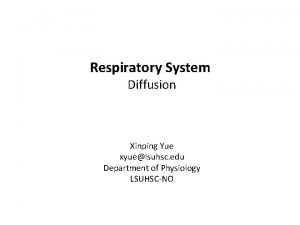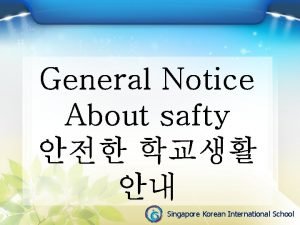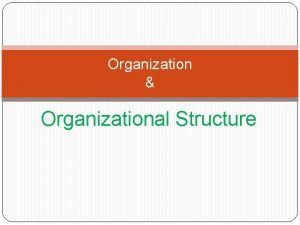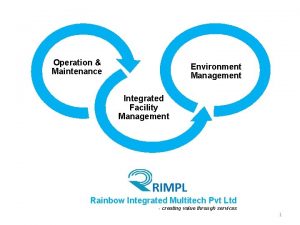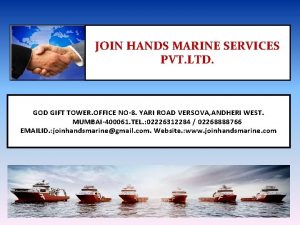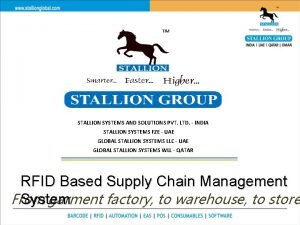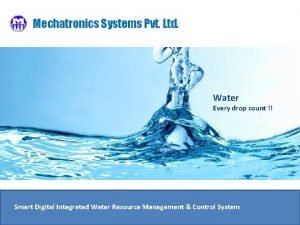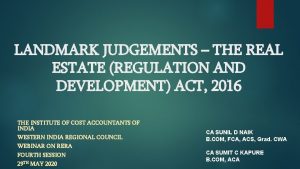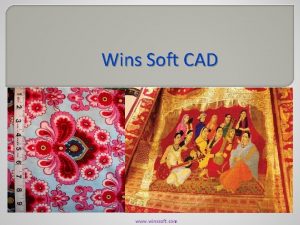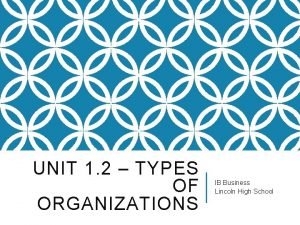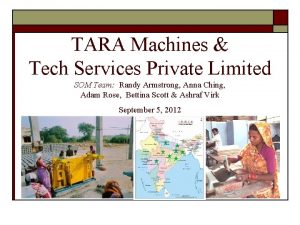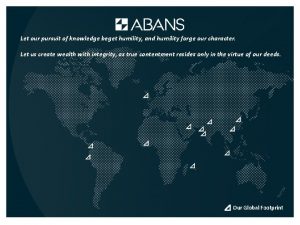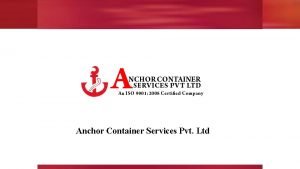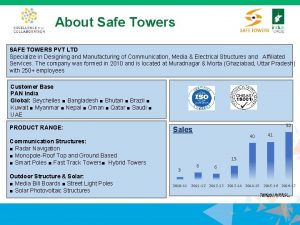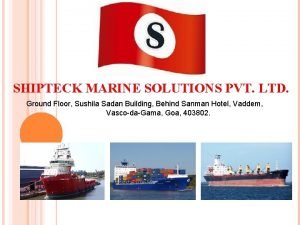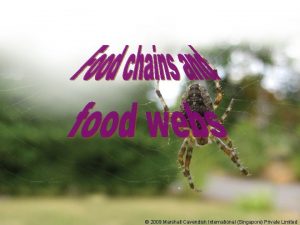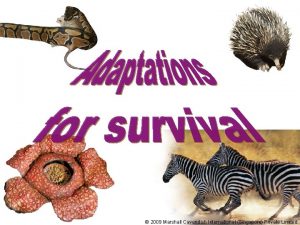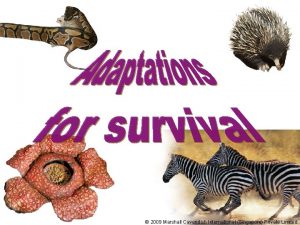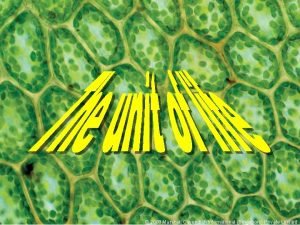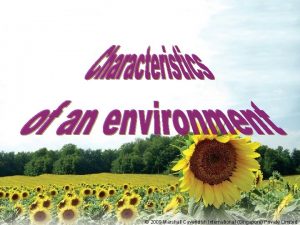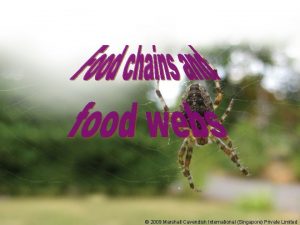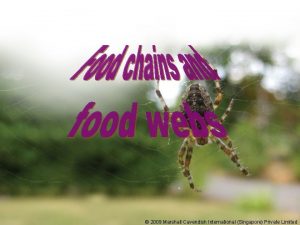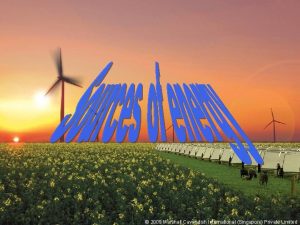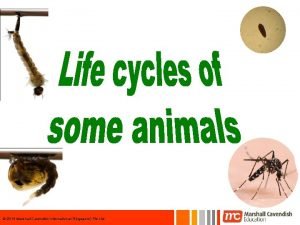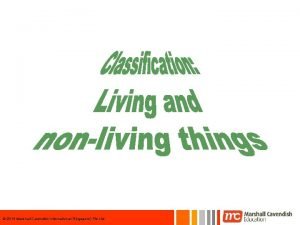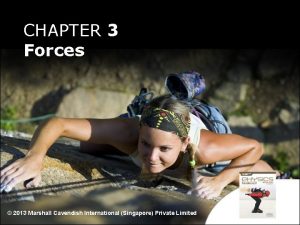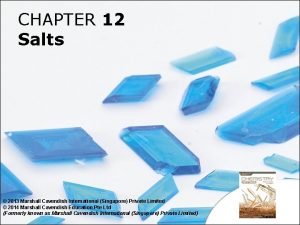2009 Marshall Cavendish International Singapore Private Limited Questions













































- Slides: 45

© 2009 Marshall Cavendish International (Singapore) Private Limited

Questions to think about… What is man’s impact on the environment? What can we do to save our environment? © 2009 Marshall Cavendish International (Singapore) Private Limited

Man and his environment • Everything that man does affects or has an impact on the environment. • When man’s activities affect the environment in a helpful way, we say that man has made a positive impact on the environment. • When man’s activities affect the environment in a harmful way, we say that man has made a negative impact on the environment. © 2009 Marshall Cavendish International (Singapore) Private Limited

Positive impacts on our environment • The development of Science and Technology has made a positive impact on our environment, and on us. • For example, modern technology has allowed us to: grow crops o eat more nutritious and pest-free food o have more comfortable homes and better medicines o © 2009 Marshall Cavendish International (Singapore) Private Limited

Positive impacts on our environment They are the invention of man-made materials, as well as farming and breeding. What are two activities that have made a positive impact on our environment? © 2009 Marshall Cavendish International (Singapore) Private Limited

Man-made materials • Natural resources are useful things that make materials which benefit us. • Natural resources are useful things that exist in nature. • Some natural resources that are important for our survival are: plants o animals o air o water o © 2009 Marshall Cavendish International (Singapore) Private Limited

Man-made materials • However, some natural materials are not good enough to meet our needs. • Thus, man has created new materials to meet our needs, and these are called man-made materials. • For example, paper carrier bags (made from trees) were used in the past. • Now, most carrier bags are made of plastic since it is stronger, longer-lasting and waterproof. paper bag plastic bag © 2009 Marshall Cavendish International (Singapore) Private Limited

Man-made materials are not found in nature. However, they can be made from a mixture of things that are found in nature. Some important manmade materials are alloys, plastics and ceramic. © 2009 Marshall Cavendish International (Singapore) Private Limited

Alloys • Metals are important natural materials that are found in the ground. • Some common metals include iron, aluminium, silver, tin, copper, zinc and gold. • Metals are often not used in their pure forms because pure metals are often too soft to be used. • So Man invented alloys that are made up of two or more metals. • Some alloys contain non-metals such as carbon and silicon. • Alloys are harder and stronger than pure metals. © 2009 Marshall Cavendish International (Singapore) Private Limited

Plastics • Plastics do not exist naturally, and are invented by Man. • Most plastics are made from chemicals obtained from petroleum. © 2009 Marshall Cavendish International (Singapore) Private Limited

Plastics Properties of different plastics Uses • light and can withstand high temperature • packing materials • food containers • stiff • equipment casing • furniture • flexible • plastic bags • clingfilm for wrapping food • transparent • sometimes used to replace glass © 2009 Marshall Cavendish International (Singapore) Private Limited

Ceramic • Ceramic is a man-made material that is made from clay and other substances from the ground. • The material is heated in a special oven till it becomes hard and strong. • Pottery, bricks and tiles are made of ceramic. • Ceramic can withstand high heat and sometimes used for making cooking utensils. © 2009 Marshall Cavendish International (Singapore) Private Limited

Benefits of man-made materials • The invention of man-made materials has helped to prevent too many plants and animals from being killed. • For example, the invention of man-made leather has resulted in fewer animals being killed for their skin. • Also, when we use plastics, we reduce the number of trees that are chopped down to make paper and wood products. fake leather bag and belt made of a type of plastic © 2009 Marshall Cavendish International (Singapore) Private Limited

Questions on materials Remember to include : • State the property of material • Relate the property to the use, how it is useful/beneficial to the user.

Farming and breeding • If we keep harvesting plants and killing animals in the wild for food, they may become extinct. • So, we grow plants and rear animals in farms. • This allows us to have enough supplies of plants and animals for food, without greatly reducing their number in the wild. © 2009 Marshall Cavendish International (Singapore) Private Limited

Farming and breeding • Some zoos also breed animals to prevent the animals from becoming extinct. • Farming and breeding help plants and animals to reproduce, so that their kind will a female tiger and her cub in a continue to exist. zoo © 2009 Marshall Cavendish International (Singapore) Private Limited

Negative impacts on our environment What are two activities that have They are deforestation made a negative and pollution. impact on our environment? © 2009 Marshall Cavendish International (Singapore) Private Limited

Deforestation • We cut down trees and forests to provide us with more food, more space and more materials. • When trees are cleared, land is made available for growing crops and constructing buildings. • Also, more forests are destroyed so that fuels and minerals can be dug from the ground. • The clearing of forests by cutting or burning is called deforestation. © 2009 Marshall Cavendish International (Singapore) Private Limited

Deforestation This isharmful because other Although Some trees effects can be of living and non-living grown deforestation again, itare may the take loss things also destroyed of aliving veryare things, long time soil for erosion a when aglobal forest is cleared. and forest to recover. warming. © 2009 Marshall Cavendish International (Singapore) Private Limited

Loss of living things • Deforestation not only kills trees, but robs many living things of their shelter and food source. • This is because trees are the habitats of many animals and plants, and they also provide food to many animals. • Without shelter and food, animals and plants will die. • If living things become extinct, there will be fewer natural resources for us to use. © 2009 Marshall Cavendish International (Singapore) Private Limited

Soil erosion • When trees are removed, the soil is directly exposed to the wind and rain. • These remove the rich and useful top layer of soil. • As a result, the ground becomes dry, hard and useless for growing crops. • This removal of soil by wind and rain is called soil erosion. © 2009 Marshall Cavendish International (Singapore) Private Limited

Global warming • Plants are the only living things that can take in carbon dioxide and give out oxygen. • Plants ensure that the air around us maintains a certain amount of carbon and oxygen. • When deforestation occurs, we are decreasing the amount of oxygen and increasing the amount of carbon dioxide in the air. © 2009 Marshall Cavendish International (Singapore) Private Limited

Global warming • When forests are burnt, a large amount of carbon dioxide is released into the air. • Carbon dioxide is a gas that makes the Earth warm. • This warming effect is known as the greenhouse effect. © 2009 Marshall Cavendish International (Singapore) Private Limited

Global warming How does the greenhouse effect come about? Let us take a closer look. © 2009 Marshall Cavendish International (Singapore) Private Limited

Carbonheat dioxide other When fromand the some Sun reaches gases prevent heatgoes from the Earth, somethe of Sun’s this heat escaping into space. This keeps back into space. the Earth warm. We call this the greenhouse effect. Sun’s heat Carbon. The dioxide and other reaches gases trap somethe of Earth. the Sun’s heat on Earth. Some heat goes Less heat goes back into space, creating the greenhouse effect. earth My Pals are Here! Science © 2008 Marshall. International Cavendish (Singapore) Private Limited © 2009 Marshall Cavendish

Global warming • The greenhouse effect is needed to keep the Earth from freezing. • However, too much carbon dioxide in the air can cause the Earth to become too warm. • This results in global warming. © 2009 Marshall Cavendish International (Singapore) Private Limited

Global warming • Global warming will result in the temperature of Earth to rise, causing the North and South poles to melt. • This will lead to more water in the seas – causing the sea level to rise. © 2009 Marshall Cavendish International (Singapore) Private Limited

Pollution • Pollution occurs when harmful substances or pollutants are added to the environment. • Thus, it has a negative impact on our environment. • Pollution can be caused by: o o o litter and rubbish harmful chemicals human waste smoke acid rain CFCs © 2009 Marshall Cavendish International (Singapore) Private Limited

Litter and rubbish • The amount of rubbish produced is increasing all over the world. • Nowadays, many people use disposable items and throw away things that are still usable, hence worsening the situation. • In Singapore, we have a very efficient rubbish disposal system. Rubbish is collected regularly from home and offices. Rubbish can be buried, but since land is scarce in Singapore, most rubbish is burnt in incinerators. o Here, there is also a law that fines and punishes people who litter. o o © 2009 Marshall Cavendish International (Singapore) Private Limited

Litter and rubbish • Biodegradable and nonbiodegradable materials Pollution is also due to the type of waste material present. o Materials that are broken down easily by decomposers, such as wood, paper and wool, are called biodegradable materials. o Man-made materials such as plastics and ceramic are long-lasting and cannot be broken down by decomposers. They are called nonbiodegradable materials. o a biodegradable item a non-biodegradable item © 2009 Marshall Cavendish International (Singapore) Private Limited

Litter and rubbish • Biodegradable and non-biodegradable materials A large amount of waste today is made up of non-biodegradable materials. o These will remain on Earth for a very long time, taking up space and polluting the land. o Some materials such as plastics produce a poisonous gas when burnt, and can cause us to get sick when we breathe it in. o © 2009 Marshall Cavendish International (Singapore) Private Limited

Harmful chemicals • Some man-made chemicals can lead to both land water pollution. • For example: Weed killers and insecticides can poison the soil and harm other plants and animals. o If these get washed into reservoirs and rivers, our water sources can be contaminated. o a cropduster spraying pesticides © 2009 Marshall Cavendish International (Singapore) Private Limited

Human waste • Some countries do not have proper sewerage systems to get rid of waste such as urine and faeces. • The waste is disposed into the rivers and sea, making the water unsafe for drinking and washing. raw sewage flowing into a river © 2009 Marshall Cavendish International (Singapore) Private Limited

Human waste • In Singapore, we have a proper waste disposal system which treats the waste water and produces water that is safe enough to be released into the environment. • Now, the treated water from our sewerage system can be reclaimed to produce ‘NEWater’ – water that is safe to drink. © 2009 Marshall Cavendish International (Singapore) Private Limited

Smoke • Air pollutants such as dust, dirt, chemicals and other gases may be present in the air. • Most of these pollutants come from factories, machines and vehicles. • The burning of oil, coal and wood also produces smoke. • Smoke can cause eye irritation and damage to our respiratory system. My Pals are Here! Science © 2008 Marshall. International Cavendish (Singapore) Private Limited © 2009 Marshall Cavendish

Smoke • Haze From time to time, the air around us get hazy. o Haze can be caused by the burning of forests. o Haze affects our health as it can cause eye irritation and breathing difficulties. o haze over Kuala Lumpur © 2009 Marshall Cavendish International (Singapore) Private Limited

Acid rain • Smoke from factories and vehicles contains harmful chemicals. • Some of these harmful substances dissolve in rainwater to form weak acids. • This is called acid rain. • Acid rain can react with stone and metals, causing them to corrode. o Building and outdoor structures such as monuments can be damaged. • Acid rain is also harmful to living things. o o It can cause trees to die. It can kill the organisms in rivers and lakes, and contaminate our water supplies. © 2009 Marshall Cavendish International (Singapore) Private Limited

CFCs and the ozone layer • Ozone is a thin layer of gas in the atmosphere which shields the Earth from most of the harmful ultraviolet (UV) rays from the Sun. • Too much exposure to UV rays can cause sunburn and eye problems. • In more serious cases, skin cancer may develop. • UV rays can also damage crops, thus affecting our food supply. Sunblock protects our skin from harmful UV rays. © 2009 Marshall Cavendish International (Singapore) Private Limited

CFCs and the ozone layer • The ozone layer has become thinner in the past few years. • It has become so thin that scientists have discovered a hole in the ozone layer over the Antarctic, and a smaller hole over the Arctic. • Studies show that the damage to the ozone layer is caused by gases called CFCs (chlorofluorocarbons). CFCs are used in refrigerators, aerosols, air conditioners and fire extinguishers. o Due to its harmful effects on the environment, many products today are CFC-free. o © 2009 Marshall Cavendish International (Singapore) Private Limited

Saving our environment Deforestation and pollution have affected the air, water What can we The do to. Earth is and land. prevent harm gettingfurther warmer and weather to our environment? patterns have changed! © 2009 Marshall Cavendish International (Singapore) Private Limited

Dispose waste properly • We should not dump waste and rubbish on the ground or into rivers and seas. • Waste should be disposed of properly and rubbish should be burnt in incinerators. © 2009 Marshall Cavendish International (Singapore) Private Limited

Produce less rubbish • We should reduce packing and other unnecessary use of materials • We should reuse or recycle more materials such as plastics, paper and metals. © 2009 Marshall Cavendish International (Singapore) Private Limited

Use CFC-free products • To protect the ozone layer, we should use products that are CFC-free. • We should also avoid using foam packaging that contains CFCs. © 2009 Marshall Cavendish International (Singapore) Private Limited

Reduce the use of fuels • We should use less fuels such as petrol and coal. • We should think of using other energy sources that do not produce harmful gases. This wind turbine is able to capture wind energy for conversion into electricity. © 2009 Marshall Cavendish International (Singapore) Private Limited

© 2009 Marshall Cavendish International (Singapore) Private Limited
 2009 marshall cavendish international
2009 marshall cavendish international 2009 marshall cavendish international
2009 marshall cavendish international Mconline singapore
Mconline singapore Marshall cavendish
Marshall cavendish Crescent valves international private limited
Crescent valves international private limited Bellerbys educational services limited singapore branch
Bellerbys educational services limited singapore branch Perfusion vs diffusion limited
Perfusion vs diffusion limited Korean international school singapore
Korean international school singapore Dr rick griffith
Dr rick griffith Crossroads international church singapore
Crossroads international church singapore Stiriti ayur therapies private limited
Stiriti ayur therapies private limited Skyhms
Skyhms Pragati automation
Pragati automation What is an organization
What is an organization Rainbow integrated multitech private limited
Rainbow integrated multitech private limited Join hands marine
Join hands marine Genesis gas solutions
Genesis gas solutions Gaveshana geosciences private limited
Gaveshana geosciences private limited Sm exhaust technology private limited
Sm exhaust technology private limited Alexis global
Alexis global Stallion onebyte private limited
Stallion onebyte private limited Nec corporation noida
Nec corporation noida Mechatronics systems pvt ltd
Mechatronics systems pvt ltd Sanvo resorts private limited
Sanvo resorts private limited Disa decorations private limited
Disa decorations private limited Birla medisoft private limited
Birla medisoft private limited Wins soft innovations private limited
Wins soft innovations private limited Vadera tradelink private limited
Vadera tradelink private limited Ib business meaning
Ib business meaning Public limited company gcse business
Public limited company gcse business Tara tradelink private limited
Tara tradelink private limited Swan environmental
Swan environmental Abans smart beta portfolio
Abans smart beta portfolio Garuda aerospace funding
Garuda aerospace funding Sap industry
Sap industry Anchor container services private limited
Anchor container services private limited Safe towers private limited ghaziabad
Safe towers private limited ghaziabad Taashee linux services private limited
Taashee linux services private limited Genie auto products private limited
Genie auto products private limited Sds security
Sds security Genesis gas solutions private limited
Genesis gas solutions private limited Sag infotech private limited
Sag infotech private limited Skid lashing services
Skid lashing services Memorandum of private limited company
Memorandum of private limited company Eventfaqs media pvt. ltd
Eventfaqs media pvt. ltd Avgol india private limited
Avgol india private limited
